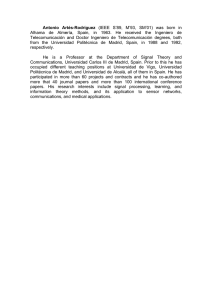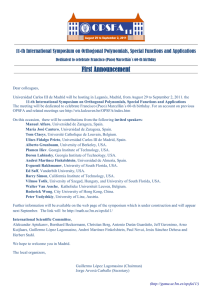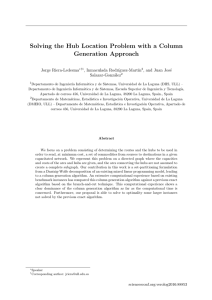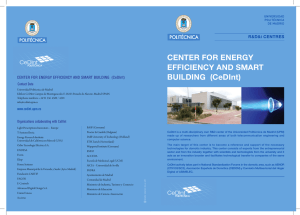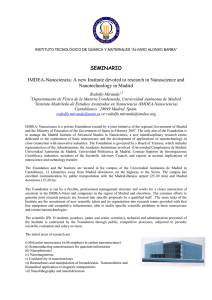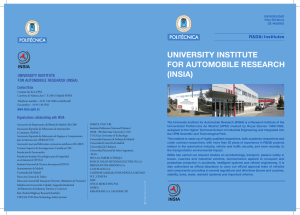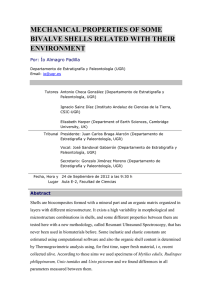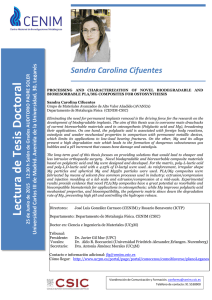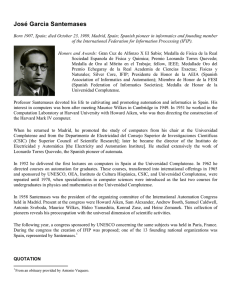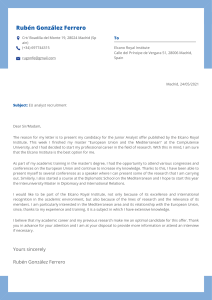An Attempt to Establish a Correspondence between
Anuncio
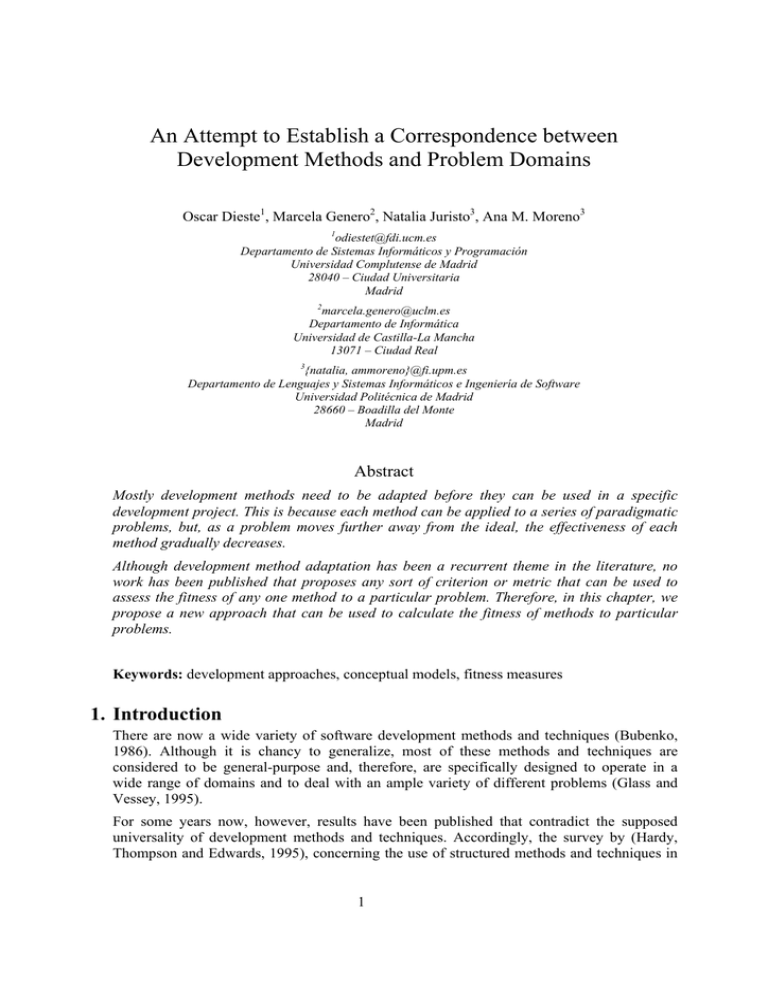
An Attempt to Establish a Correspondence between
Development Methods and Problem Domains
Oscar Dieste1, Marcela Genero2, Natalia Juristo3, Ana M. Moreno3
1
odiestet@fdi.ucm.es
Departamento de Sistemas Informáticos y Programación
Universidad Complutense de Madrid
28040 – Ciudad Universitaria
Madrid
2
marcela.genero@uclm.es
Departamento de Informática
Universidad de Castilla-La Mancha
13071 – Ciudad Real
3
{natalia, ammoreno}@fi.upm.es
Departamento de Lenguajes y Sistemas Informáticos e Ingeniería de Software
Universidad Politécnica de Madrid
28660 – Boadilla del Monte
Madrid
Abstract
Mostly development methods need to be adapted before they can be used in a specific
development project. This is because each method can be applied to a series of paradigmatic
problems, but, as a problem moves further away from the ideal, the effectiveness of each
method gradually decreases.
Although development method adaptation has been a recurrent theme in the literature, no
work has been published that proposes any sort of criterion or metric that can be used to
assess the fitness of any one method to a particular problem. Therefore, in this chapter, we
propose a new approach that can be used to calculate the fitness of methods to particular
problems.
Keywords: development approaches, conceptual models, fitness measures
1. Introduction
There are now a wide variety of software development methods and techniques (Bubenko,
1986). Although it is chancy to generalize, most of these methods and techniques are
considered to be general-purpose and, therefore, are specifically designed to operate in a
wide range of domains and to deal with an ample variety of different problems (Glass and
Vessey, 1995).
For some years now, however, results have been published that contradict the supposed
universality of development methods and techniques. Accordingly, the survey by (Hardy,
Thompson and Edwards, 1995), concerning the use of structured methods and techniques in
1
